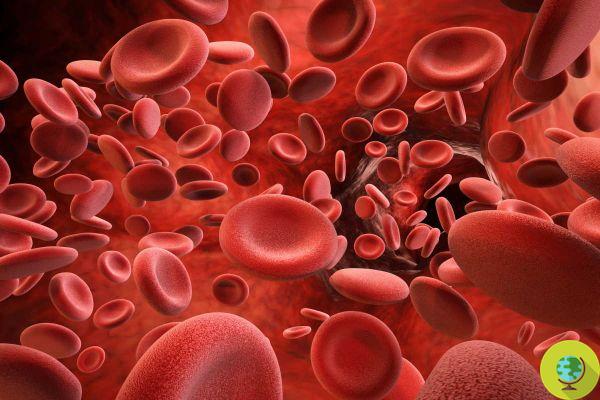 Don't store avocado like this: it's dangerous
Don't store avocado like this: it's dangerous
What are the symptoms of thrombocytopenia or thrombocytopenia and how does this autoimmune disease that causes platelets go down?
It has been talked about in recent days, after the death of an 18-year-old vaccinated with AstraZeneca and hospitalized in Genoa due to a cavernous sinus thrombosis: it is the thrombocytopenia, an autoimmune disease characterized by the drastic reduction in the number of circulating platelets in the blood, due to their destruction and the suppression of production. But what are the symptoms of thrombocytopenia?
In general, autoimmune thrombocytopenia (or thrombocytopenia) (Itp) manifests itself with haemorrhages and the possible appearance of petechiae, small skin spots, flat and rounded. But bleeding from the nose, gums or from the gastrointestinal or genitourinary tract can also occur.
It has an estimated incidence of 10-20 cases per 100 thousand people and in a third of cases the disease develops asymptomatically.
Index
What is autoimmune thrombocytopenia
As we said, it is a disease characterized by the drastic reduction in the number of circulating platelets due to their destruction and the suppression of production. (Autoimmune thrombocytopenia: what it is, how to treat it and link with the anti-Covid vaccine)
Typically, the disease is divided into two forms:
- primary forms (about 80% of the total)
- secondary forms(20%), in which autoimmune thrombocytopenia can arise as a result of other diseases, such as lupus erymatosus
In both forms the nature of the disease is autoimmune and anti-platelet autoantibodies are detected. On the other hand, however, the causes that trigger this process and give rise to the disease are not yet known. In addition, ITP can also appear in pregnancy, albeit rarely.
Symptoms of autoimmune thrombocytopenia
The most recognizable symptoms are the so-called petechiae and bruising of the skin, especially in the lower limbs, together with bleeding from the nose (epistaxis) or gums (when platelets reach a particularly low level, with values in the order of 5000-10000 per micro / liter, bleeding of various levels may occur). But bleeding bubbles can also occur in correspondence of the mucous membranes, bleeding of the gastrointestinal and genitourinary tract (presence of blood in the urine) and, in women, more abundant bleeding during menstruation. In some cases there may be secondary iron deficiency anemia, accompanied by weakness or asthenia.
In summary, the symptoms of autoimmune thrombocytopenia are:
- petechiae, especially in the lower limbs
- bleeding from the nose or gums
- bleeding from the gastrointestinal system
- blood in the urine
- abundant menstruation
- iron deficiency anemia
- asthenia
How is autoimmune thrombocytopenia diagnosed
La diagnosis of ITP is carried out by exclusion. From a clinical point of view, the disease is characterized by the absence of any other symptom that is not directly related to thrombocytopenia. The morphological analysis of a blood sample under an optical microscope is essential for the diagnosis.
The disease is divided into three classifications:
- Newly diagnosed ITP: the disease could be temporary and resolve spontaneously in a more or less short time but in any case within the first year
- Persistent ITP: when the disease does not regress within 3-12 months of the primary diagnosis. This also includes cases that do not maintain a response to therapy with the reappearance of the disease
- Chronic ITP: when the disease is present for more than 12 months it is difficult, but not impossible, for it to regress spontaneously
The therapies
Each type of therapy aims above all at reduce the risk of bleeding and therefore to maintain the number of platelets at non-dangerous levels for health. For the most severe cases, chronic or recurring after an initial response, more invasive treatments are evaluated such as splenectomy, still the therapeutic option with the highest response rate and which guarantees recovery to two thirds of patients.
In secondary ITP the primary goal is to treat and resolve the underlying disease or stop taking any medications that may be causing it.
Read also:
- Platelets: normal values and symptoms of blood clotting disorders
- Symptoms of thrombosis to watch out for in the Danish agency's letter to the vaccinated
- Pfas: alter blood clotting and increase cardiovascular risk
- Symptoms of poor circulation: the first signs to watch out for (and that we sometimes ignore)
- Thrombosis: symptoms, causes, how to recognize and treat it in time
- Symptoms of thrombosis to watch out for in the Danish agency's letter to the vaccinated


























